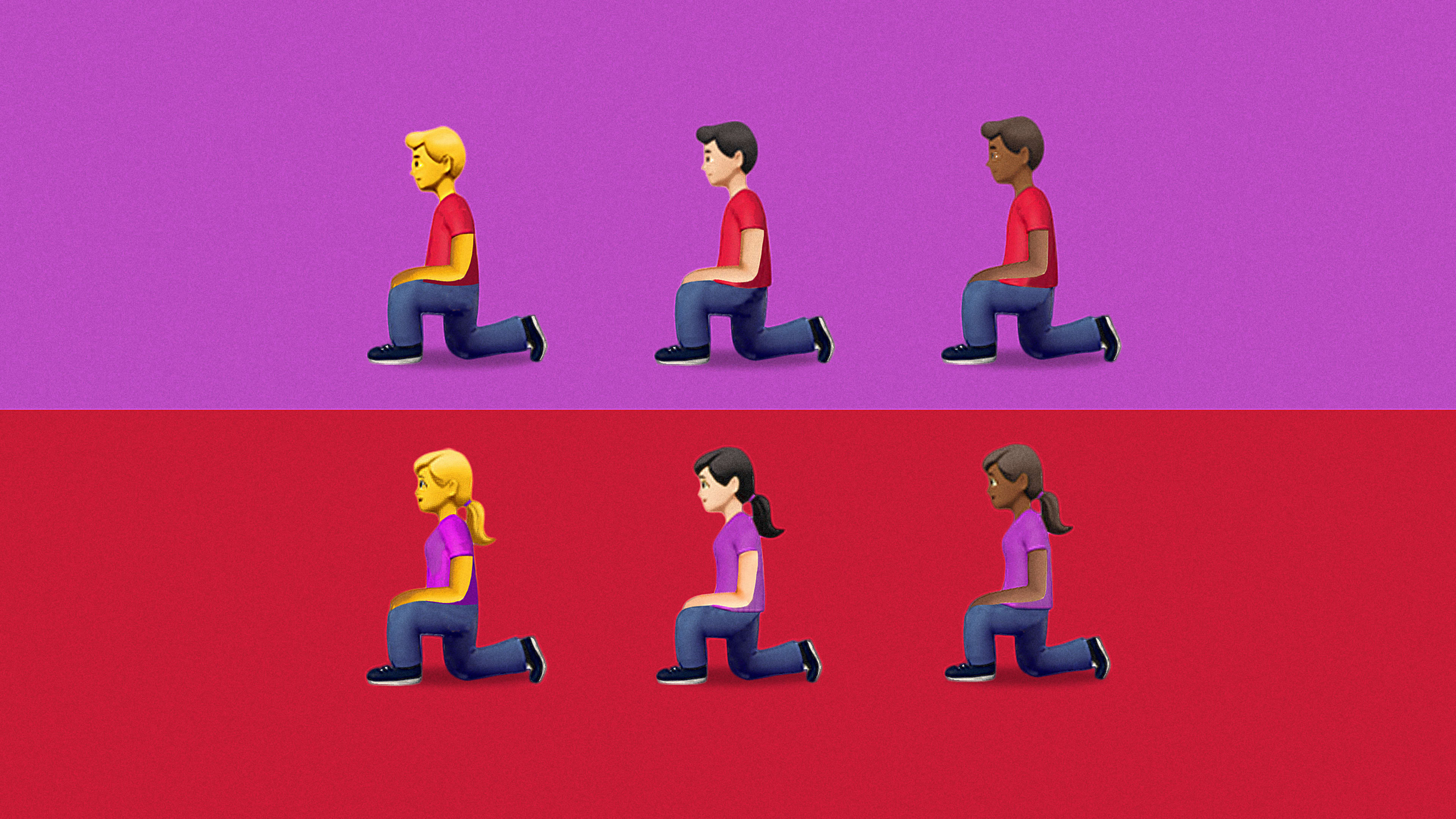Graphic designer Ji Lee often uses his craft to comment on social issues. His Instagram bio even sums up his content as, “tiny sabotages of the normal.” So back in 2017, when Colin Kaepernick kneeled during the national anthem to protest police brutality, Lee took notice. Kaepernick’s sabotage of the normal did not go over well.
When Lee realized there wasn’t an emoji to depict someone kneeling in protest, he created one of his own. He worked with Emojination, which advocates for more inclusive emoji, to submit the proposal to Unicode, the universal standard bearer for emoji, in March 2018. Lee had since forgotten about it, he says, but the Black Lives Matter protests over the past few weeks made him take another look. He saw that the proposal was actually approved by Unicode, but the execution has been muddy. On all platforms and devices other than Google and Android, the “person kneeling” emoji is on two knees rather than one.
The reason why likely isn’t nefarious, but more the result of the initial proposal being too broad. While the graphic in the proposal showed the emoji on one knee, the text didn’t specify that the “person kneeling” emoji should be on one knee instead of two. Taking a knee for protest isn’t mentioned either—resting, praying or proposing are mentioned as use cases; a reference to “political contexts” is the only hint at Ji Lee’s original intent.
“Implementation got mangled along the way and became person kneeling on two knees by all companies except Google,” wrote Jennifer 8 Lee, vice chair of the Unicode emoji subcommittee and co-founder of Emojination. “In retrospect, the emoji should’ve perhaps been more clearly named like, ‘person down on one knee.’ There’s ambiguity in the word kneeling, but we had thought the proposal image was enough guidance.” Ji Lee agreed, saying “the proposal was weak in making the emoji as a protest emoji rather than kneeling as a custom or cultural position.”
Unicode’s approval process considers things like frequency of use, multiple uses or meanings, ability to be used in sequence with other emojis, and whether or not it’s “breaking new ground.” Once you submit a proposal, it goes through an approval process by an emoji subcommittee. The LA Times has called the Unicode Consortium “shadowy overlords,” if that gives you any indication of how long the process can take.
Google confirmed that its one-knee version of the emoji has existed on Android and Google devices since the fall. Jennifer Daniel, creative director for Google’s emoji program, sees that version as more universal. “A principle of what makes emoji useful in the first place is that they are designed to have the broadest appeal,” says Daniel. “Kneeling on one knee is multi-purpose.”
For his part, Ji Lee is waiting to hear whether it’s possible for the emoji to be implemented as he intended nearly three years ago. Considering the past few weeks, the need for this form of expression is only going to intensify.
Recognize your brand’s excellence by applying to this year’s Brands That Matter Awards before the early-rate deadline, May 3.
